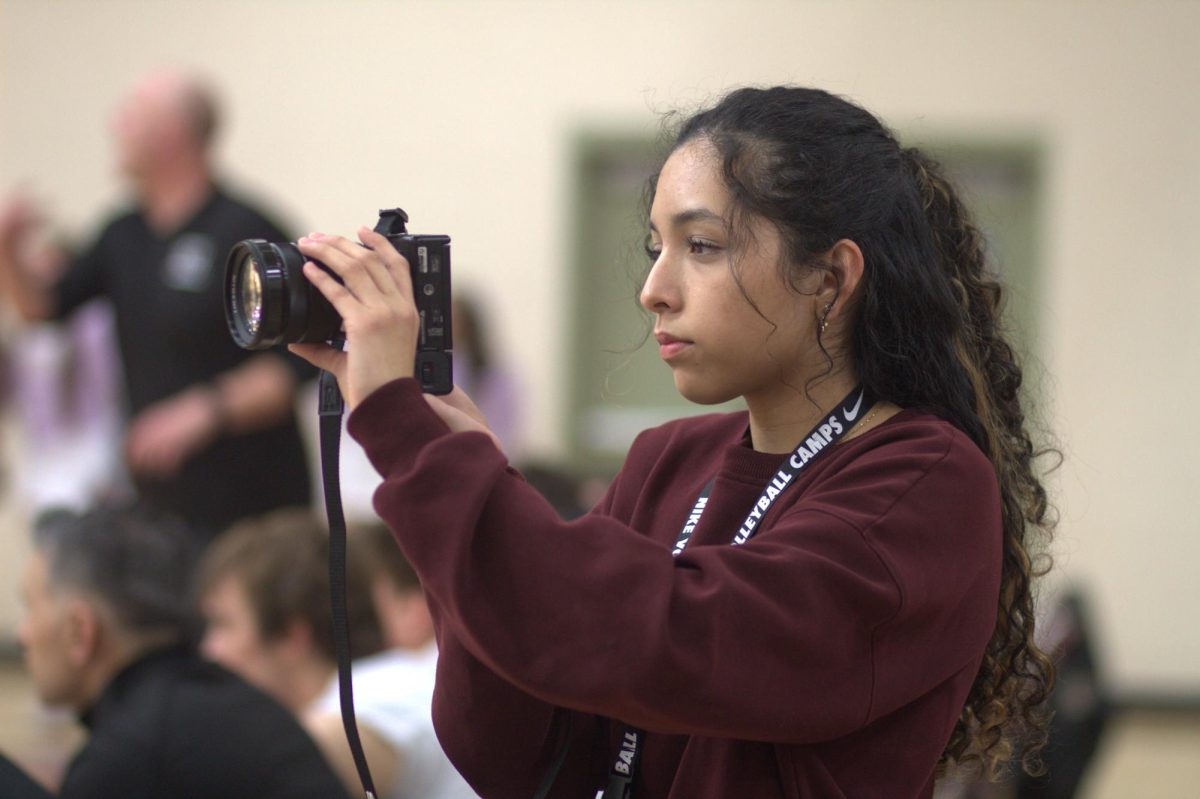The loud sizzles from the leftover rice hitting the oil and smell of soy sauce filled up the room as fried rice was prepared by us as an attempt to find out if the cooking process at our school’s industrial-esque kitchen — much different than our own kitchens at home — was easier than cooking at home. In doing this, we also aimed to find out if students apply what they learn at school when they are cooking at home, and if students experience more hardship when cooking away from the classroom?
Chef Brian Cramer and Culinary I students Zachary Christensen, Nathalie Kafka and Vivienna Ni were the ones to answer these questions along with an attempt by us to create fried rice, a dish Culinary I students created in class, to compare the two experiences. “I integrated the dish into my curriculum around four years ago,” Cramer said.
“Asian cuisine is the food I look forward to eating the most … It’s the food I grew up on and it’s hard to mess up.”
Regarding the fried rice, Cramer advised not only how to make the dish, but also how to make the dish taste properly. He explained that when you make it, you need to have all of the ingredients laid out, a process called mise en place, and be prepared to cook.
Cramer also iterated the importance of using leftover ingredients to make fried rice.
“It is supposed to be a leftover dish,” Cramer said “Whatever leftovers you have in the fridge or freezer — as long as they complement one another — they are fair game. For fried rice specifically, you must use leftover rice; rice that is at least a day old and has gotten the chance to chill in the freezer or fridge, typically uncovered. So make sure to put it on a top shelf so it doesn’t get contaminated. And don’t forget the sauce,” Cramer said.
When asked what students’ most common mistake is, he said it was timing.
“In class, [students] put the pan on the stove immediately and start heating it up when nothing else is ready to go,” Cramer said. “They haven’t even pulled the knife yet and the pan is getting hot. You’re gonna end up with a fire — don’t start heating the pan until everything else is ready,” Cramer said.
Christensen recalled making the dish in class as a positive experience.
“It went good, I remember it tasted very good,” Christensen said. “ [It had] lots of different ingredients and vegetables.”
Kafka and Ni, however, said they had their fair share of difficulties with the dish.
“My group struggled with getting the texture of the rice correct,” Kafka said.
When asked what she would do differently to better the dish and the cooking process, Ni said “Not that much soy sauce and substitute bacon for pork,” Ni said.
Comparing the experiences of cooking at home versus cooking in the classroom, students who have previously cooked a dish they made in class, and decided to try it again at home, were asked about their experience.
“I struggled a little bit without Cramer,” Kafka said. “He is always so organized and has a set plan on the days we cook.”
When asked what students need the most when creating this dish, answers varied but one stood out: Safety precautions. We noticed that to make this dish in the safest way possible, you should be wary of the high heat and make sure you do not burn yourself as you toss the ingredients in the pan.
In order to settle the debate if cooking at home is different compared to cooking at school, we attempted to make fried rice at home.
The conclusion reached is that there are more benefits to cooking at school because the supplies and equipment are handed to you rather than having to go out to the store and buy all the ingredients. The added bonus is that you have an instructor to guide you to the way of success. However, cooking at home also has its advantages such as being more familiar with the space you are cooking in and less people having to maneuver around.
















